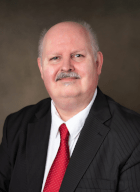Alternative Power Report, December 2025
In the December 2025 issue of the Alternative Power Report produced by Power Systems Research and authored by Guy Youngs, you’ll find articles on slowing EV Sales, hydrogen power, battery development, China’s shift from diesel powered trucks to electric, and Spain’s growing emphasis on hydrogen power. Read these articles and more in the December Alternative Power Report today. PSR
Guy Youngs is Forecast and Technology Adoption Lead at Power Systems Research



